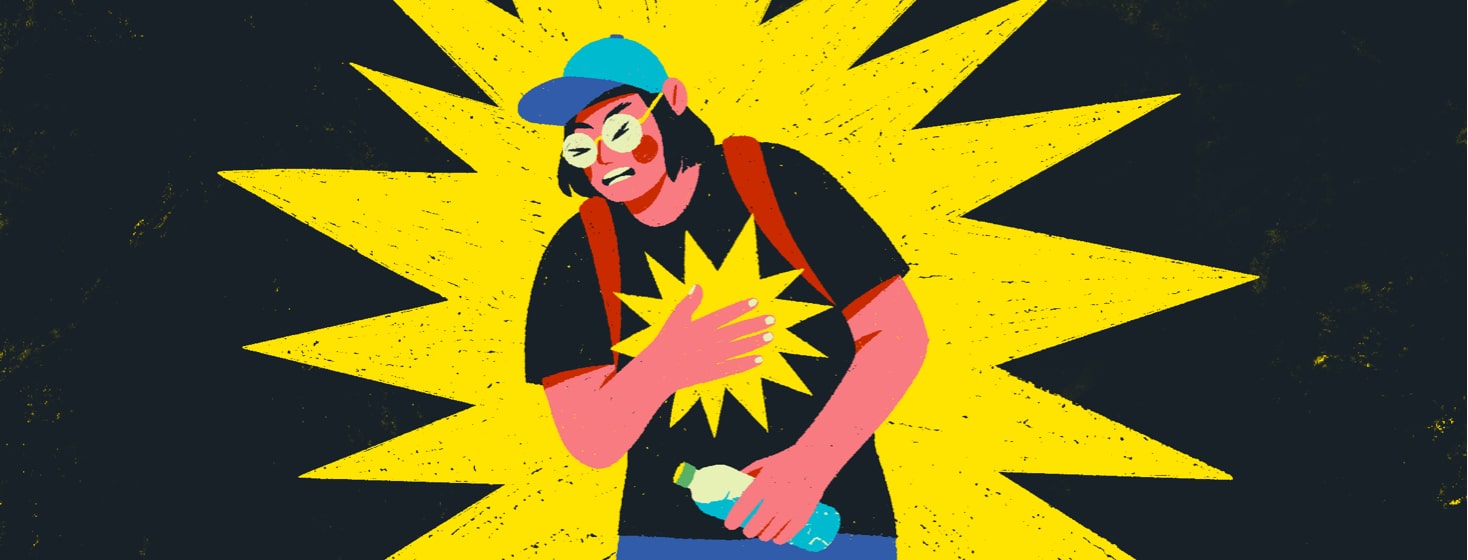An Unnerving Complication of AxSpa: Costochondritis
Axial spondyloarthritis is a systemic disease, so I know it has the potential to affect any organ system (and therefore any area) of the body. But when a new symptom strikes, I always go through this cloud of uncertainty as I try to find an answer to the question: is this related to my AxSpa?
The new symptom is especially unnerving when it manifests as chest pain. Nearly every time I experience chest pain, my thoughts immediately spiral towards panic. I think: is it my heart? Is there something wrong with my lungs? Of course, AxSpa can lead to certain cardio and pulmonary complications, so if you experience chest pain please do not assume it’s costochondritis! Go get it checked out first.
What is costochondritis?
In my case, the chest pain is related to my AxSpa and is called costochondritis. Costochondritis is inflammation of the costochondral joints (where the cartilage connects to the rib joints in the front of the chest) and costosternal joints (where the cartilage connects to the breastbone).
From what I can tell, the most common place to experience costochondritis is on the left side of the breastbone (the left costosternal joints). Unfortunately, my costochondritis does not end there. I also experience pain on the right side of my breastbone and in some of my costochondral joints, which feels like pain and soreness in my chest wall just under my breasts.
My costochondritis feels like a dull, burning pain when I’m not exerting myself. The pain definitely feels like it’s close to the surface and is more intense when I apply pressure to the sore area. I also get a sharp pain when taking deep breaths.
My first episode of costochondritis
The first time I experienced costochondritis was really jarring to me. It was during a hike in New Mexico. To be honest, I was hiking a trail that was steeper than what I should have attempted, above 8,000 feet in elevation, and so my breathing was labored.
As I climbed higher, therefore taking deeper breaths and putting my strain on my chest, I started to experience sharp pain along my breastbone and at the joints where my spine and ribs connect. When I took a rest, the pain faded to a more dull, annoying soreness.
The pain was shocking and I descended to the trailhead immediately. But I could tell that this sharp pain was caused by stress on my rib cage due to deep breathing. When I explained the pain to my rheumatologist, he carefully examined me and my description of the symptoms before determining I had inflammation of the rib cage.
Coping with rib joint inflammation
Costochondritis is a difficult symptom to get used to because chest pain is scary. When my costochondritis flares up, I do my best to suppress the panic and progress through the normal tests. I look for three things: (1) does the pain becomes sharp with a deep breath; (2) do the sore areas become more painful when pressure is applied; and (3) is the pain reduced with NSAIDS, prednisone, or NSAID pain creams. If yes, then I am fairly confident the chest pain is costochondritis.
Even though I’ve lived with costochondritis pain for several years now, every once in a while I’m still fooled. Recently, I found myself in the emergency room with sharp pain when breathing. After an X-ray, an ultrasound, and numerous other tests the ER doctor could not find a source for my pain. Luckily, it went away 24 hours later and I assume, though I do not know for sure, that I was experiencing a bout of costochondritis.
My point here is that, even if you’re used to life with costochondritis, don’t make assumptions about chest pain. Always go get chest pain checked out if it’s severe, new, unusual, causing other problems, or just otherwise seems alarming.

Join the conversation